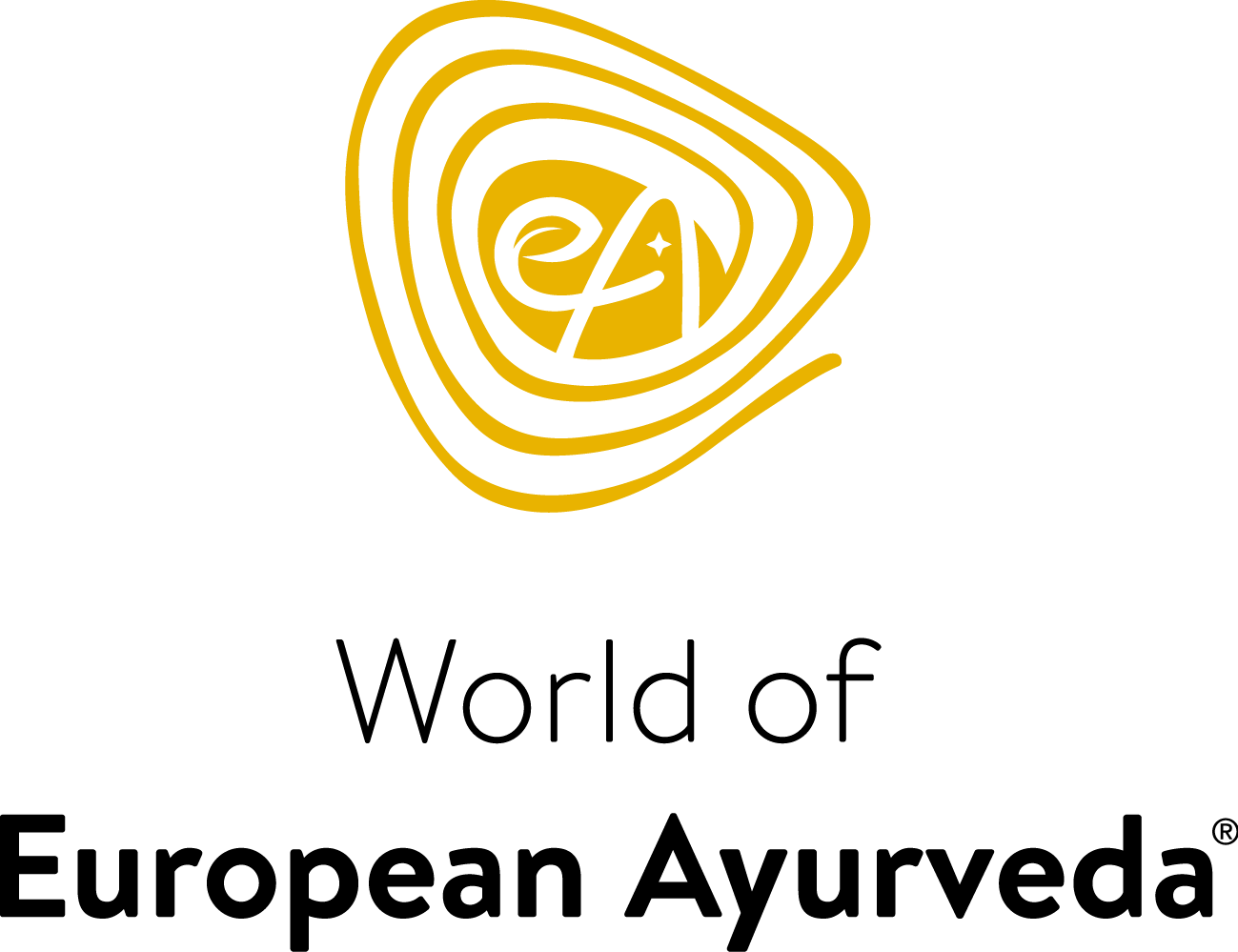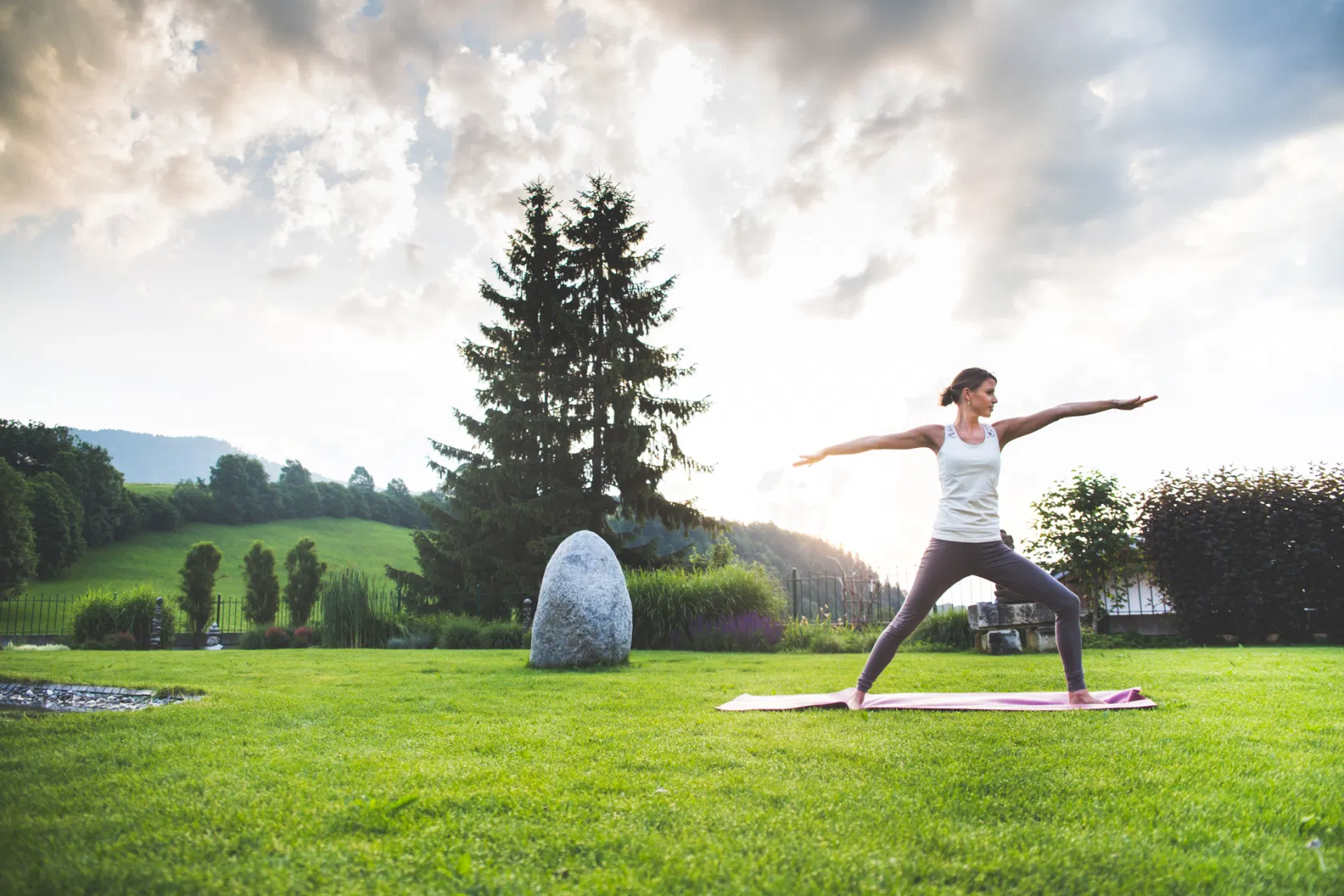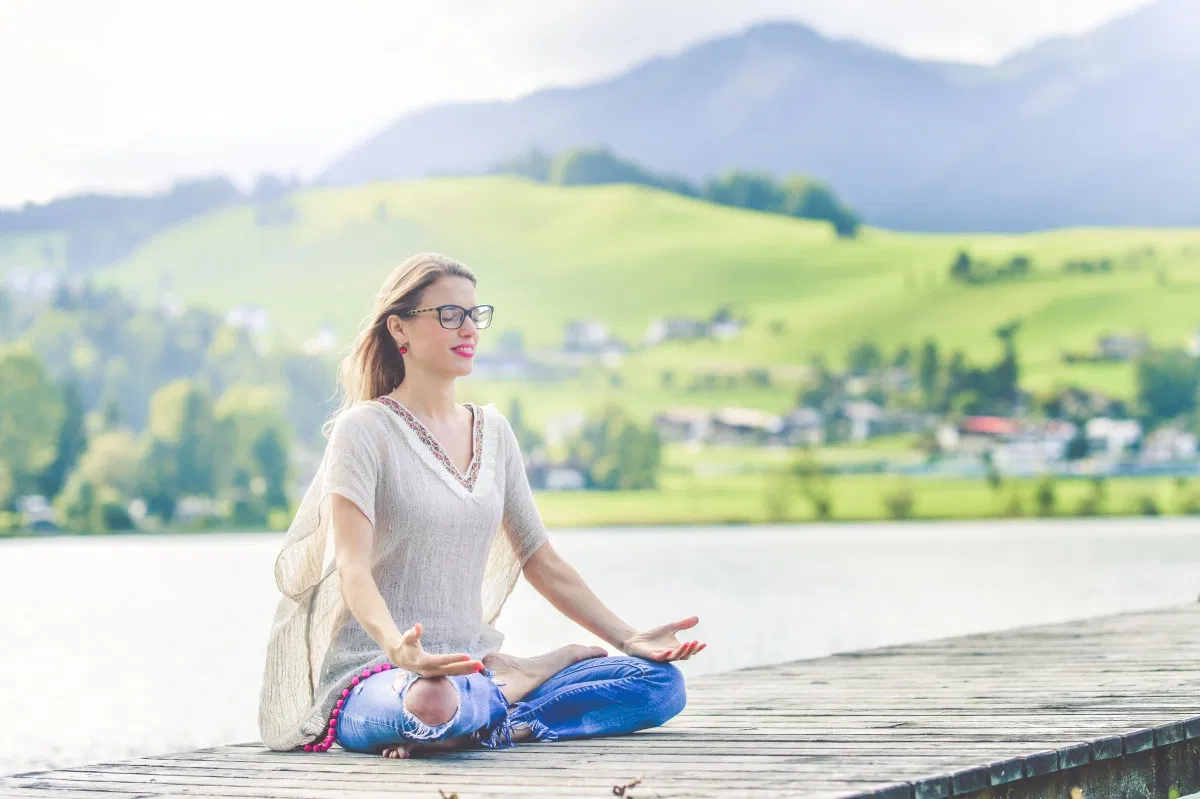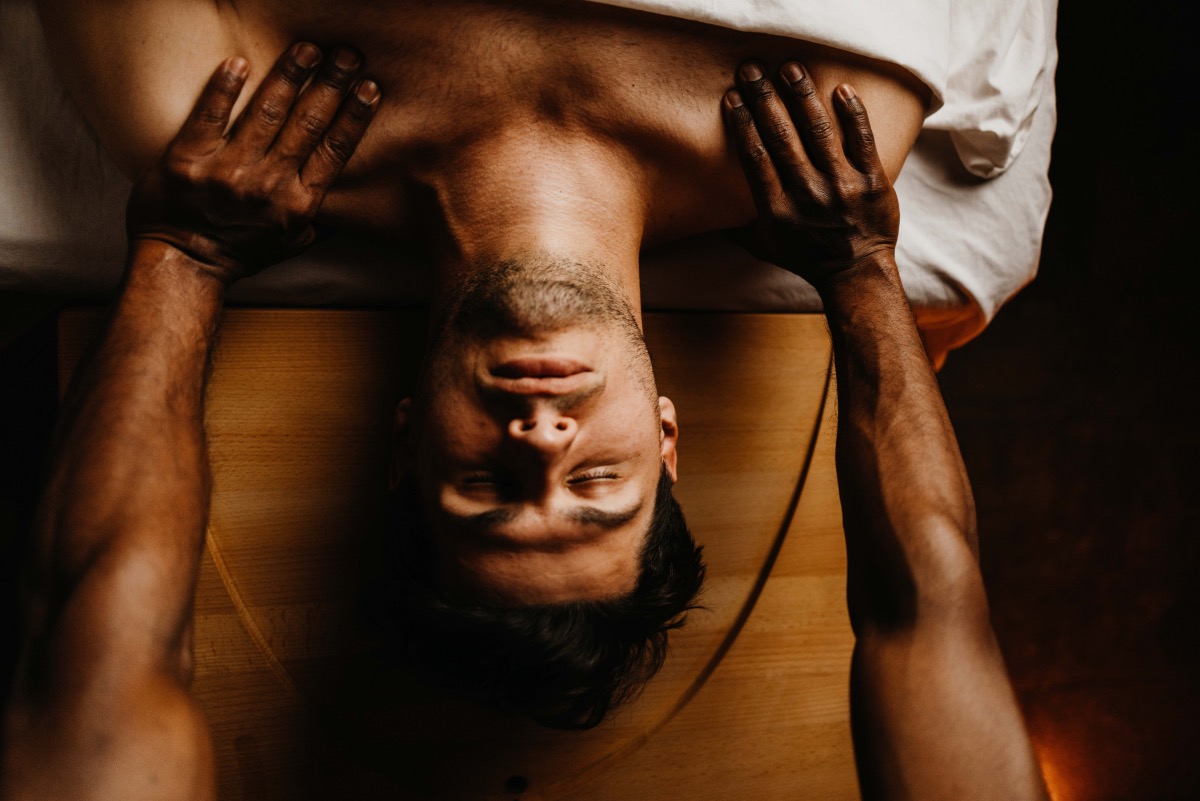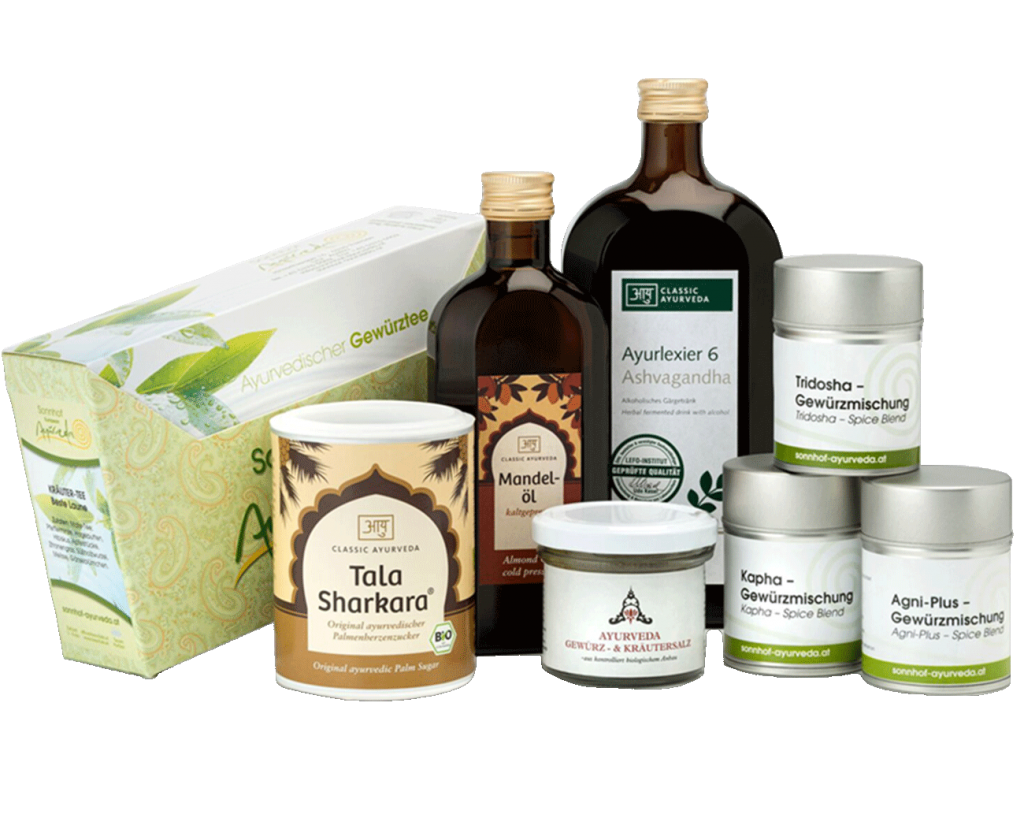Yoga is gradually becoming more and more of a trend sport. Numerous Instagram profiles are full of different asanas (an asana is a specific body position in yoga). Mistakenly, yoga is often associated exclusively with complicated-looking exercises and enormous flexibility. This can intimidate many beginners. So that you too can soon become a yogi, we have collected the most important information and the best beginner exercises for you.
1001 yoga styles
There are now over 100 different styles of yoga. For beginners, calm yoga courses with a focus on breathing, meditation and a few asanas are better suited than Jiyamukti, Bikram or Power Yoga. The latter often involve complex exercises that could be dangerous for beginners.
In the beginning it is important that you try out several styles. Not everyone likes the same style of yoga. One person likes the dynamic Vinyasa Flow more, others feel more comfortable in Kundalini Yoga and still others value the breathing exercises in Hatha Yoga. But it's not only the yoga style that is decisive, but also the studio and the teachers. The atmosphere must be right, then every yoga class will be a success.
The most important rule in yoga is: Don't complain, don't criticise, don't compare!
Every person is different and therefore every body is different. You may not be able to raise your arms above your head, but your training partner may not be able to touch the ground with his sternum when you look down. There is no point in looking at other participants and comparing yourself. Because yoga is not about you being the best in the class, but about you finding your inner centre.
Yoga is not about touching your toes. It is about what you learn on the way down. - – Jigar Gor
Advantages of yoga
After just a few yoga sessions you will feel that yoga is good for you. This is also proven by several studies from Harvard University or the University of Illinois.
And yoga works not only on the physical but also on the mental level.
Why yoga is really suitable for everyone and what it does for body, mind and soul, is what Lisa Mauracher from Sonnhof Ayurveda Resort talks about in this video:

By loading the video you accept YouTube's privacy policy.
Learn more
The effect of yoga in the body
In addition to the obvious, positive effects such as toned muscles and a high degree of flexibility of the body, the following points are also included:
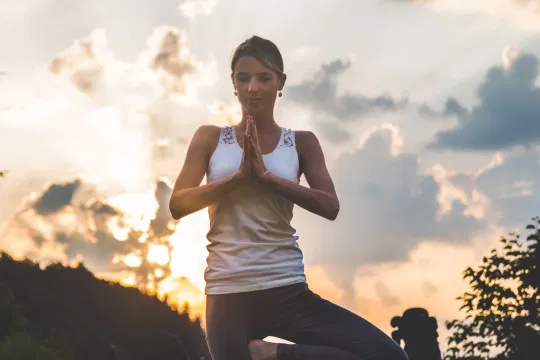
- Yoga helps the memory: Due to its meditative character, yoga has an even more positive effect on improving brain performance than other sports.
- Yoga relaxes and promotes the parasympathetic nervous system
- Yoga brings oxygen and light into the body.
- The American Heart Association has studied the effect of yoga on the heart and found that yoga has a positive influence on heart patients.
- Yoga keeps the hormones in balance
- Yoga protects the immune system and makes it more robust
- Yoga promotes a positive body feeling
The mental effect of yoga
- Improved concentration
- More patience in everyday life
- Detoxification / Detox
- Strengthened self-confidence
- Balanced hormones
- Down-to-earth
- More creativity
The best asanas for beginners
Especially as a beginner, you should start slowly. First get your body used to the new sport, take enough time and perform the asanas at your own pace, guided by your breath.
It doesn't matter whether you do a yoga session of 10 minutes in the morning or 90 minutes at the weekend, nor whether you practise on the terrace on holiday or at home in the living room.
For the yoga session, whether at home or in a studio, all you need is the following:
- Yoga mat
- comfortable yoga clothing
- possibly accessories such as harnesses, blankets or cushions
Adho Mukha Svanasana - Dog Looking Down
This asana is a classic and should not be missing from any yoga class. The exercise helps with headaches and stimulates the nervous system in the body.
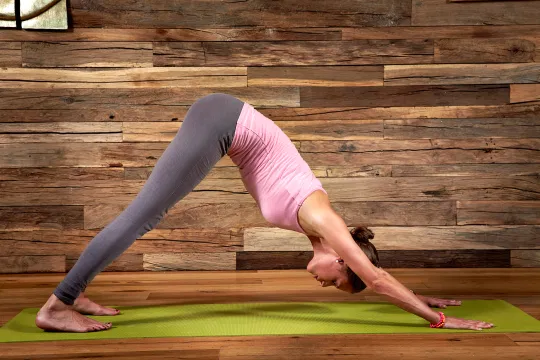
Here's how it works:
- It is best to start in quadrupedal position. Hands should be shoulder width apart and knees hip width apart.
- Exhaling release the knees from the mat and tuck.
- For proper body tension, you should push away slightly with your hands so that your heels sink into the mat.
- You should hold this position for 1 - 3 minutes and then return to the quadruped or child position.
Uttanasana - standing forward bend
Uttanasana is a standing yoga exercise. The head hangs below the heart, allowing fresh, oxygen-rich blood to flow into the brain. This exercise revitalises and gives the body an oxygen boost.
Here's how it works:
- Get into Mountain Posture (Tadasana) on the mat.
- Exhaling bend forward over the hips.
- If possible, you can place the palms on the floor or touch them with the fingertips. You can also clasp your arms above your head.
- Important: Do not push with force towards the floor, but use your own body weight. This way the body swings with the breath.
Balasana - Position of the Child
Child's pose is a very calming and relaxing exercise. It relieves the eyes, nerves, brain, breath and mind as well as the back and shoulders. This asana is a great follow-up exercise for the downward looking dog.
Here's how it works:
- Kneel on the centre of your yoga mat and sit on your heels. The big toes are touching and the knees are hip-width apart.
- Now lie forward with a forward bend until the forehead touches the floor.
- Now you can either place your hands, palms down, past your head on the left and right or place your arms, palms up, next to your torso.
- Concentrate here on calm, even breathing and stay in this position for at least 30 seconds, but no more than a few minutes.
Bhujangasana - The Cobra
Cobra pose imitates the erect posture of a snake. Here the legs and hips rest on the floor while the upper body is erect.
Here's how it works:
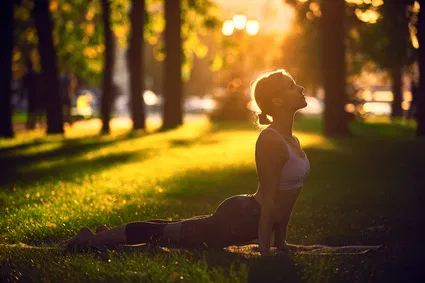
- Lie flat on your stomach so that the spine does not bend. The tops of the feet also rest flat on the floor and the heels should rest hip-width apart.
- Now bring the elbows back so that you can place the hands flat close to the body at chest level. At the same time release your head from the mat and straighten up.
- Now, vertebra by vertebra, tuck your upper body up until your arms are stretched.
- Your gaze should be forward or slightly upward and in line with your spine.
- For an even more intense stretch, you can also look upwards.
- Now breathe in and out slowly a few times and enjoy this posture and stretching of the body.
- When it is a good time for you, you can change from the cobra position back to the lying position.
Savasana - The Dead Position
This exercise looks simple, but it is not. It is considered by many to be one of the most important exercises and helps against stress, relieves tension and strengthens the ability to concentrate.
Here's how it works:
- Lie down slowly and relaxed on your back.
- The lower back should be stretched and the feet hip-width apart. Through the relaxation the feet may glide quietly outwards.
- The arms lie at a 30 - 45° angle next to the upper body. Make sure that the shoulders are not raised and the palms are facing upwards.
- Check that the spine is long. If you move the chin a little towards the chest, it is easier.
- The next step is breathing: Inhale slowly and deeply. As you exhale, let the body sink into the floor and relax.
- Now stay in this resting position for at least 5 minutes and a maximum of 20 minutes. Imagine how your body is rejuvenated by the deep relaxation and mentally go through your body from top to bottom. Head, jaw, neck, lungs, heart, abdomen, pelvis, legs and feet are now consciously perceived and relaxed.
With these exercises and information you are well prepared for your yoga start. We wish you lots of fun. Namaste!
